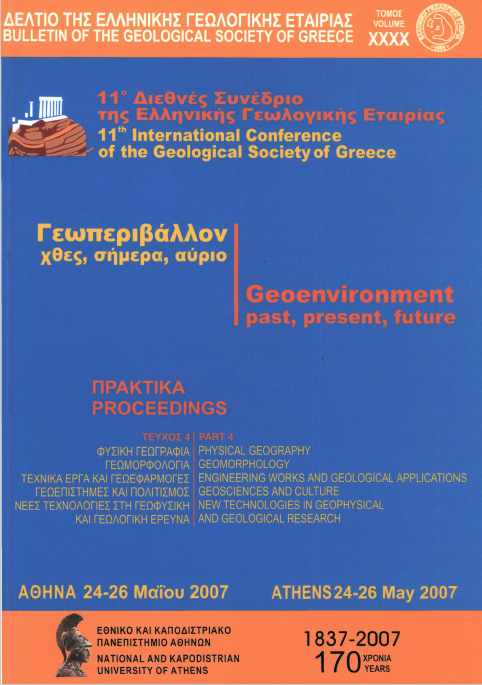Strain rates in Greece using GPS measurements from 1994-2000

Abstract
Fifteen Greek GPS campaigns from 1994-2001 are reprocessed in ITRF2000 using Bernese v4.2 software. The reference frame is navigated by 43 global, long running IGS sites, which are included in the coordinate final solution together with ~280 local sites. A loosely constrained solution is derived. We combine the 221 daily SINEX files in a least squares approach with the TANYA software, producing the coordinate time series and the velocity field in a European Fixed reference frame. Sites around Chalkidiki and Grevena show a residual motion -10 mm/yr. Sites around Attica, Evvia, SE Peloponnisos, Aegean Islands have a SW residual motion reaching -40 mm/yr in South Peloponnisos. The Patras area shows a more southwesterly motion with respect to the rest of the sites, moving -30-35 mm/yr. Geodetic strain is derived by two methods: by discrete estimation within contiguous polygons, and by fitting a continuous minimum curvature surface to the velocity field.
Article Details
- How to Cite
-
Rontogianni, S., Clarke, P., King, M., Lavallée, D., England, P., Parsons, B., & Floyd, M. (2007). Strain rates in Greece using GPS measurements from 1994-2000. Bulletin of the Geological Society of Greece, 40(4), 2032–2047. https://doi.org/10.12681/bgsg.17296
- Section
- New Technologies in Geophysical and Geological Research

This work is licensed under a Creative Commons Attribution-NonCommercial 4.0 International License.
Authors who publish with this journal agree to the following terms:
Authors retain copyright and grant the journal right of first publication with the work simultaneously licensed under a Creative Commons Attribution Non-Commercial License that allows others to share the work with an acknowledgement of the work's authorship and initial publication in this journal.
Authors are able to enter into separate, additional contractual arrangements for the non-exclusive distribution of the journal's published version of the work (e.g. post it to an institutional repository or publish it in a book), with an acknowledgement of its initial publication in this journal. Authors are permitted and encouraged to post their work online (preferably in institutional repositories or on their website) prior to and during the submission process, as it can lead to productive exchanges, as well as earlier and greater citation of published work.


